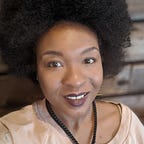The part about being used as a buffer I think is so salient to conversations about race! I feel like whiteness is a bribe, and white adjacency is a buffer. People with white adjacency like light skinned or white passing BIPOC are so often overlooked in this discussion, because they receive some of the advantages of whiteness, but also much of the discrimination that comes from being BIPOC. Really it just goes to show the evolving nature of whiteness and race as a political status.
I think that the first group to gain white adjacency in the United States were the Scots Irish of Appalachia. In some ways, some indigenous people were offered white adjacency on a conditional basis, but that condition has always been complete assimilation and because of the complexity of indigenous cultures, while some individuals gained white adjacency I don’t think it’s fair to say indigenous people as a group attained white adjacency in the United States. I actually still don’t think they have it today.
But anyway, the Scots Irish are really interesting group to look at, because they were essentially given the worst available land in exchange for being a buffer between indigenous peoples and settler colonialists. In many ways, the expansion of our country west of the Mississippi was dependent on groups like this accepting the bribe of white adjacency. They came to this country as non-white people with the promise that their children or grandchildren could become white.
With Americans of Middle Eastern descent, cultural norms around naming making more difficult for white passing MENA to move from white adjacency into whiteness. A lot of the second generation MENAs I have met have given their children names that are still traditional but also fit white normative naming conventions, or give their children names that can be shortened into white normative nicknames (i.e. Sameer becomes Sam, Aliyah becomes Aly, etc.)
MENAs in the United States aren’t really written about extensively and I think there is so much to analyze there. For example, since our country is Christian, religion becomes a super salient identity when you are both Muslim and a hijabi, which also adds a layer of gender saliency because Muslim men often do not experience the same intensity or level of discrimination that hijabi women do.
I love that you are exploring these themes in your writing and I will continue to read your excellent work, and I think you should start to look for paying markets as well. There really aren’t enough MENA voices in discussions of race, and many that are in the convo are on the wrong side.
